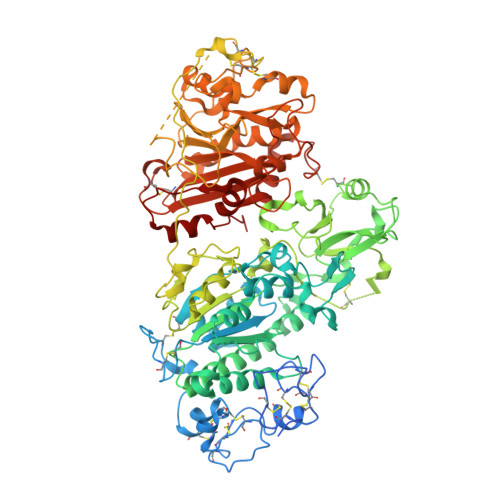Discovery of potent chromone-based autotaxin inhibitors inspired by cannabinoids.
Eymery, M.C., Nguyen, K.A., Basu, S., Hausmann, J., Tran-Nguyen, V.K., Seidel, H.P., Gutierrez, L., Boumendjel, A., McCarthy, A.A.(2023) Eur J Med Chem 263: 115944-115944
- PubMed: 37976710
- DOI: https://doi.org/10.1016/j.ejmech.2023.115944
- Primary Citation of Related Structures:
8C3O, 8C3P, 8C4W, 8C7R - PubMed Abstract:
Autotaxin (ATX) is an enzyme primarily known for the production of lysophosphatidic acid. Being involved in the development of major human diseases, such as cancer and neurodegenerative diseases, the enzyme has been featured in multiple studies as a pharmacological target. We previously found that the cannabinoid tetrahydrocannabinol (THC) could bind and act as an excellent inhibitor of ATX. This study aims to use the cannabinoid scaffold as a starting point to find cannabinoid-unrelated ATX inhibitors, following a funnel down approach in which large chemical libraries sharing chemical similarities with THC were screened to identify lead scaffold types for optimization. This approach allowed us to identify compounds bearing chromone and indole scaffolds as promising ATX inhibitors. Further optimization led to MEY-003, which is characterized by the direct linkage of an N-pentyl indole to the 5,7-dihydroxychromone moiety. This molecule has potent inhibitory activity towards ATX-β and ATX-ɣ as evidenced by enzymatic studies and its mode of action was rationalized by structural biology studies using macromolecular X-ray crystallography.
Organizational Affiliation:
European Molecular Biology Laboratory, EMBL Grenoble, 71 Avenue des Martyrs, 38000, Grenoble, France; Univ. Grenoble Alpes, INSERM U1039, LRB, 38000, Grenoble, France.





















